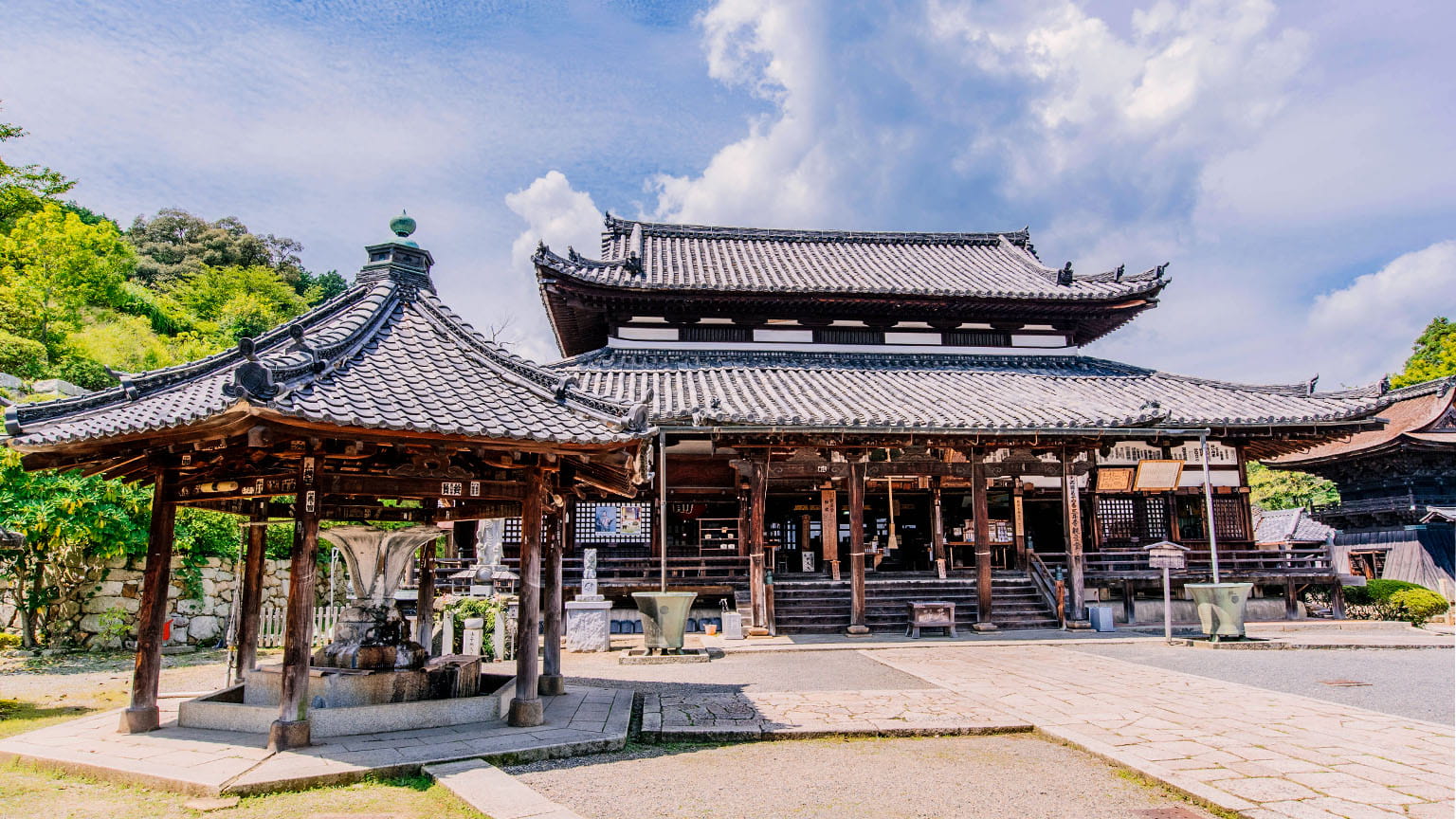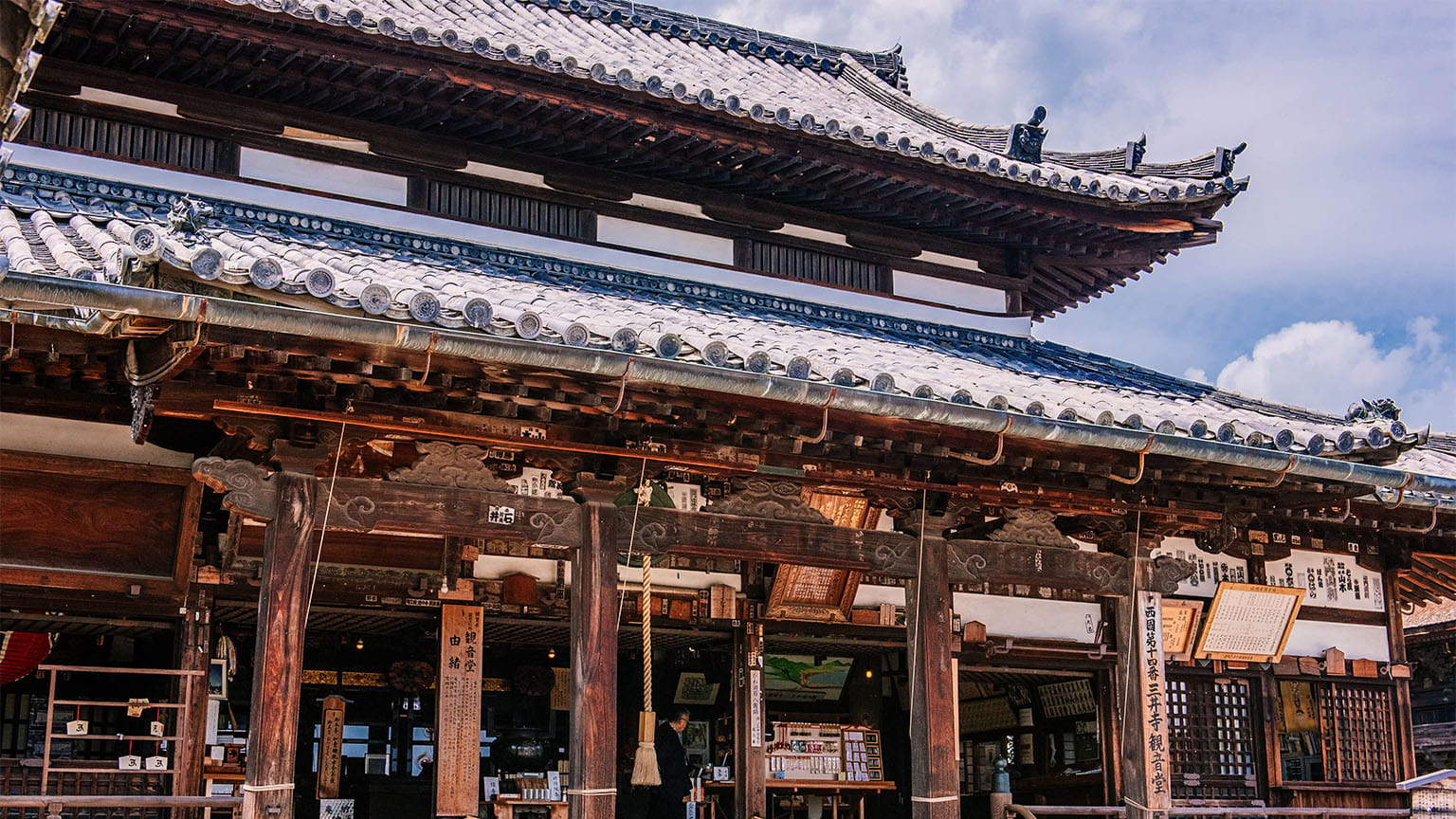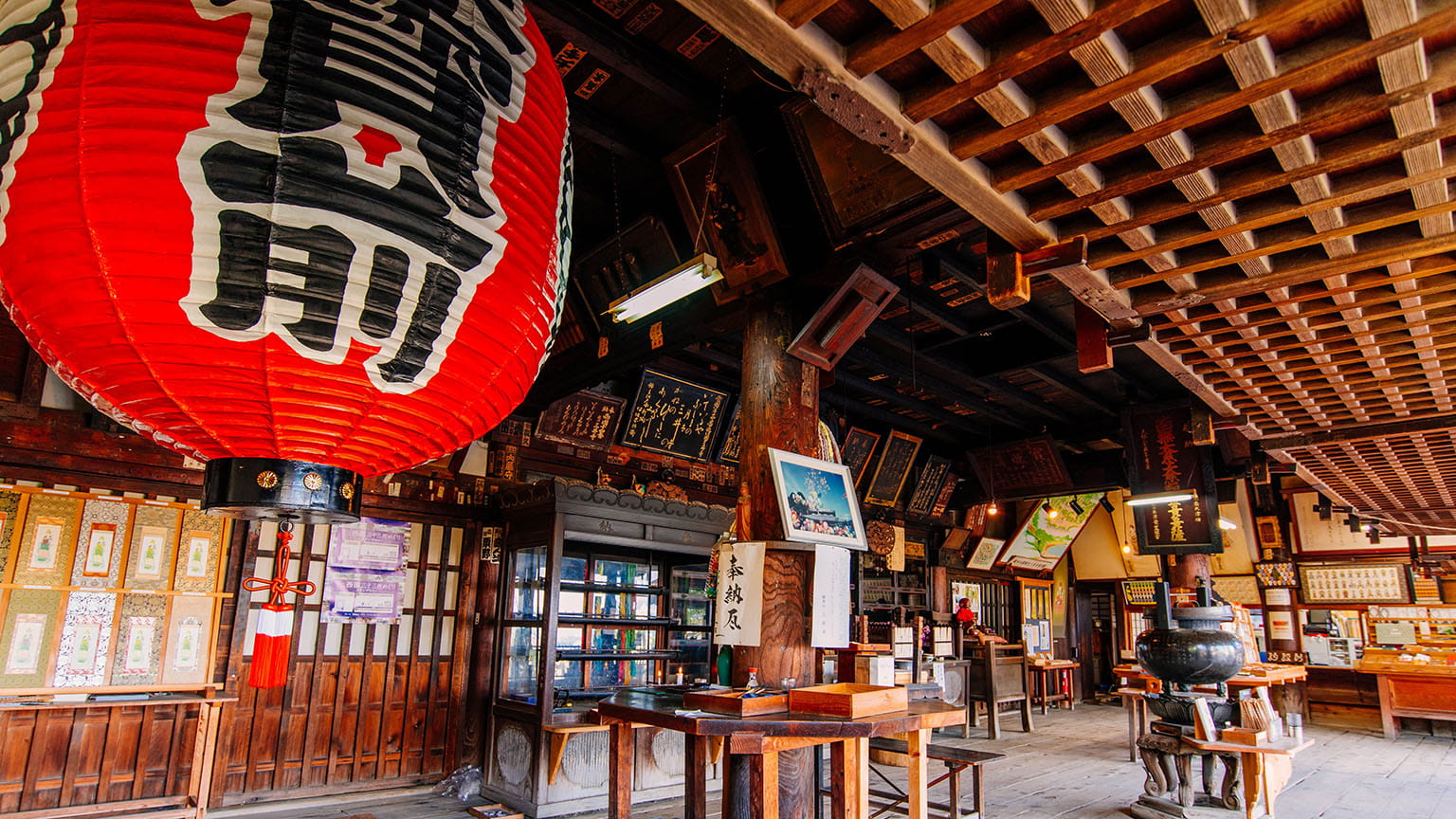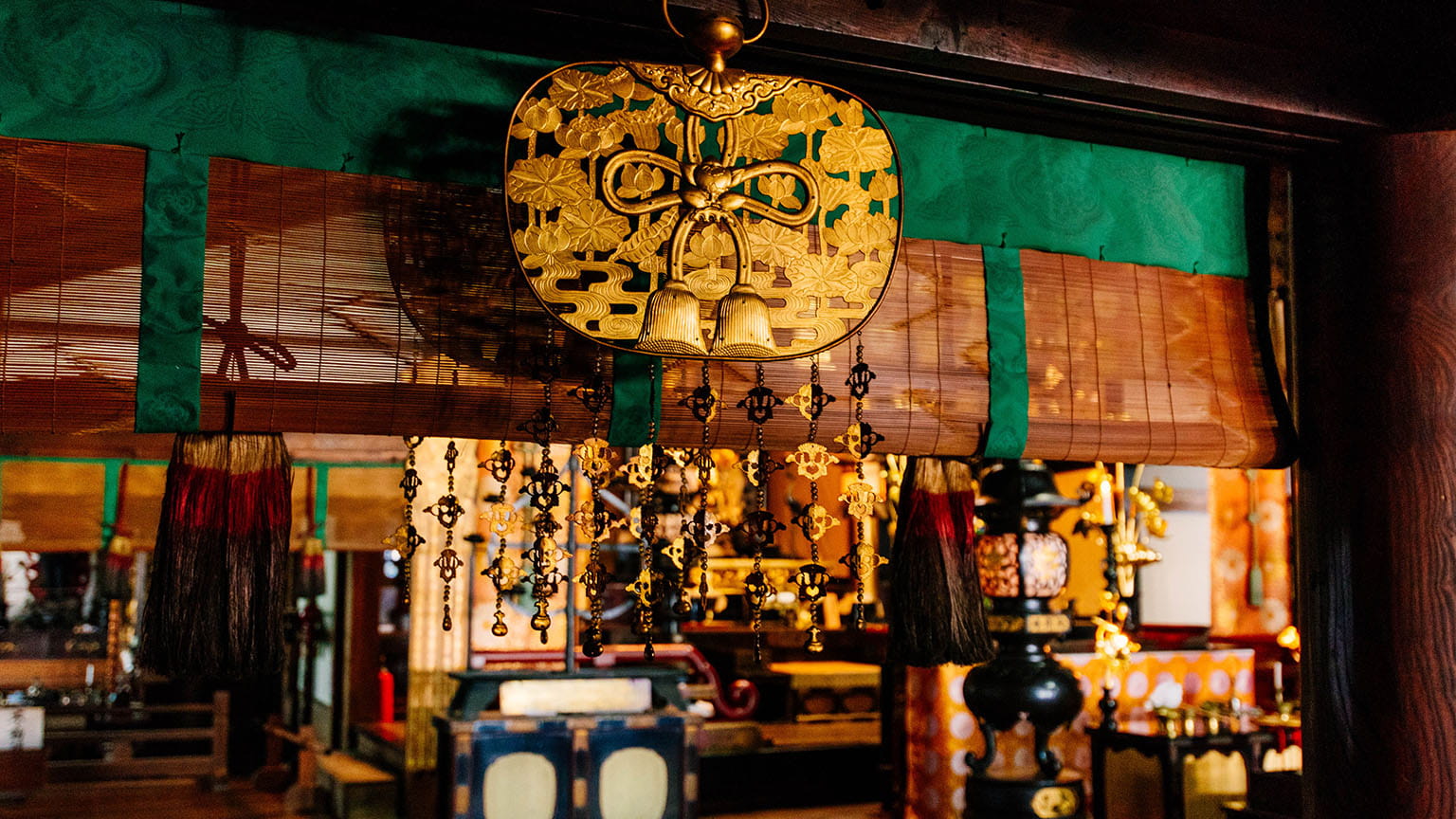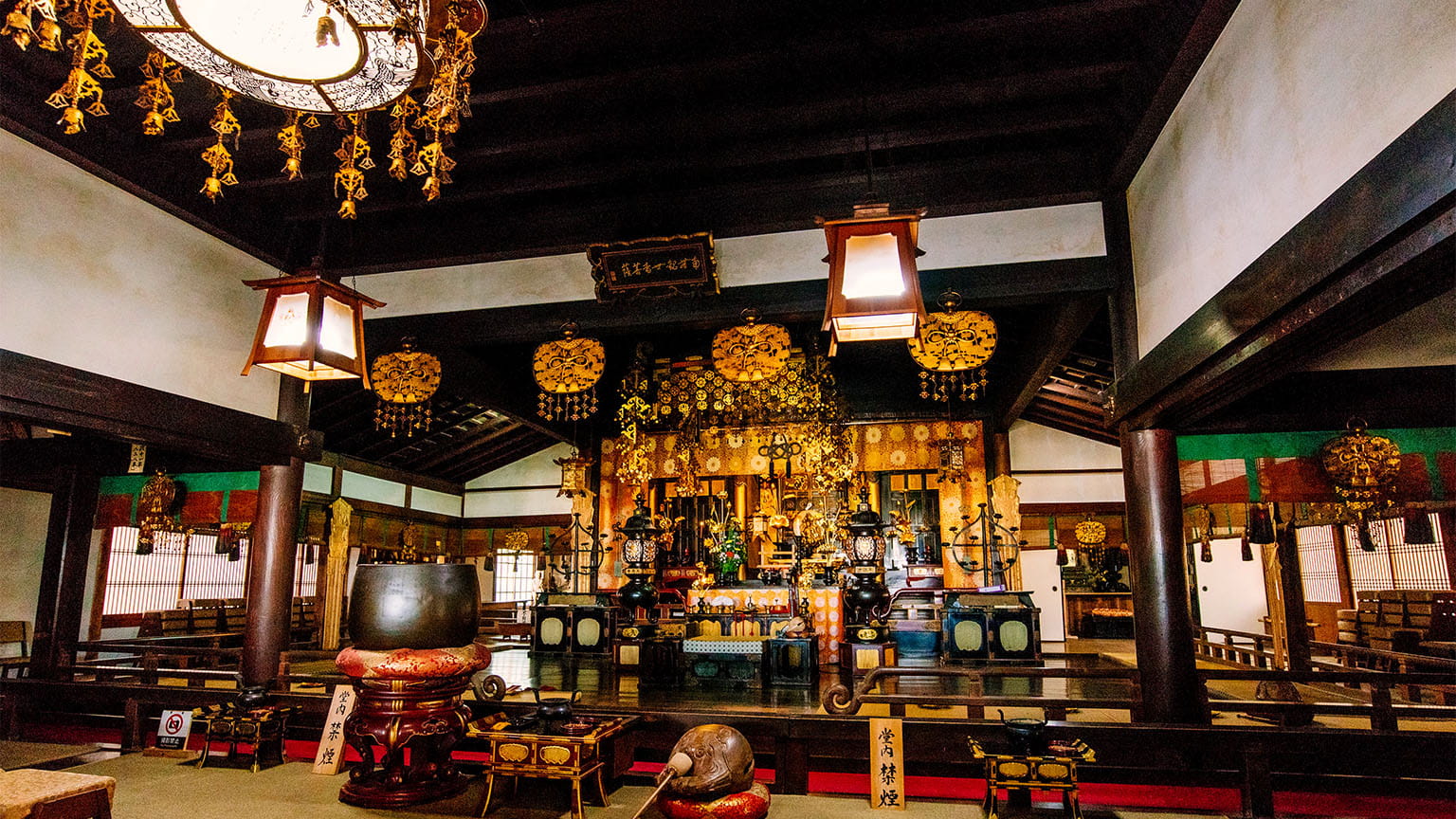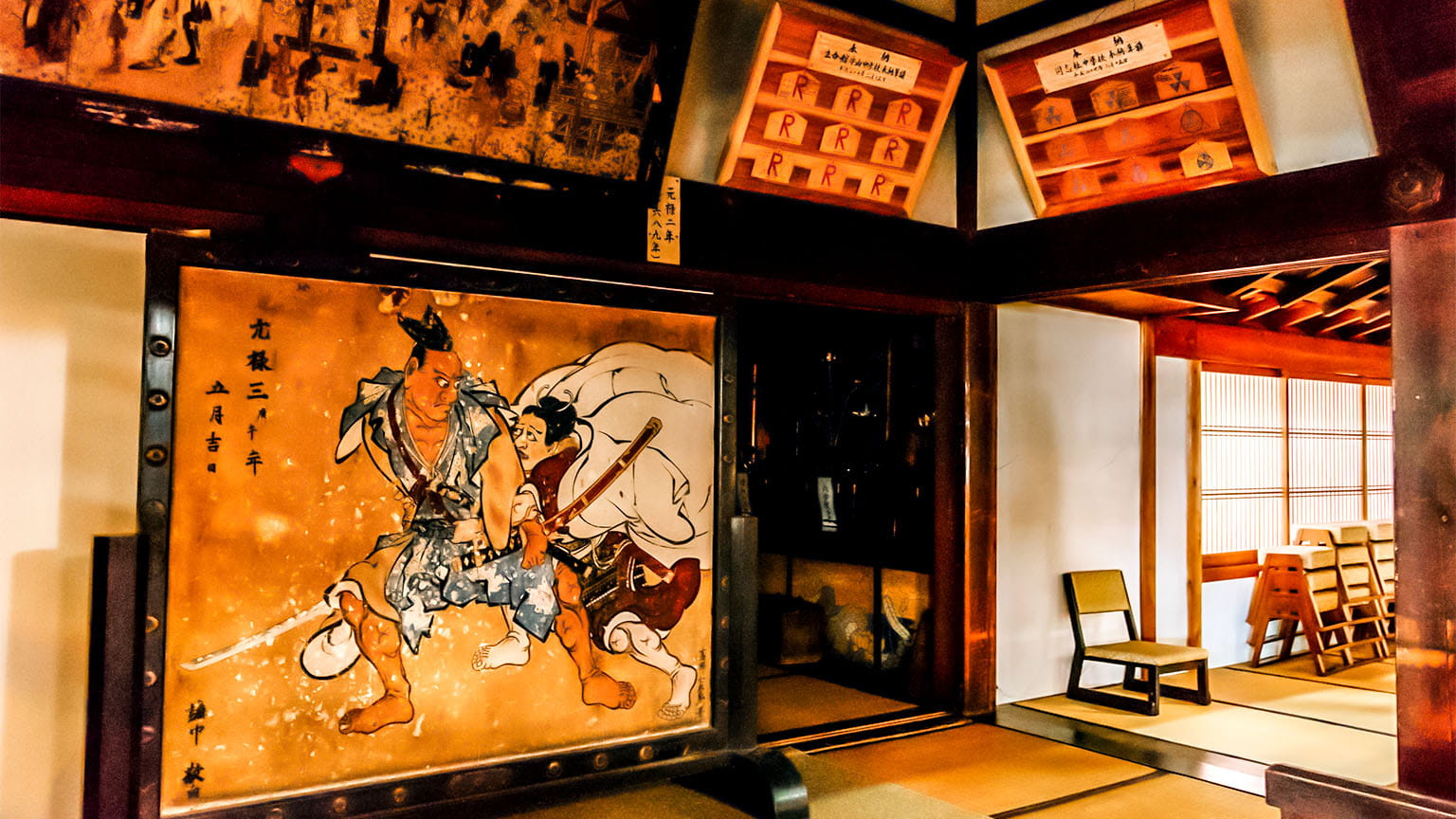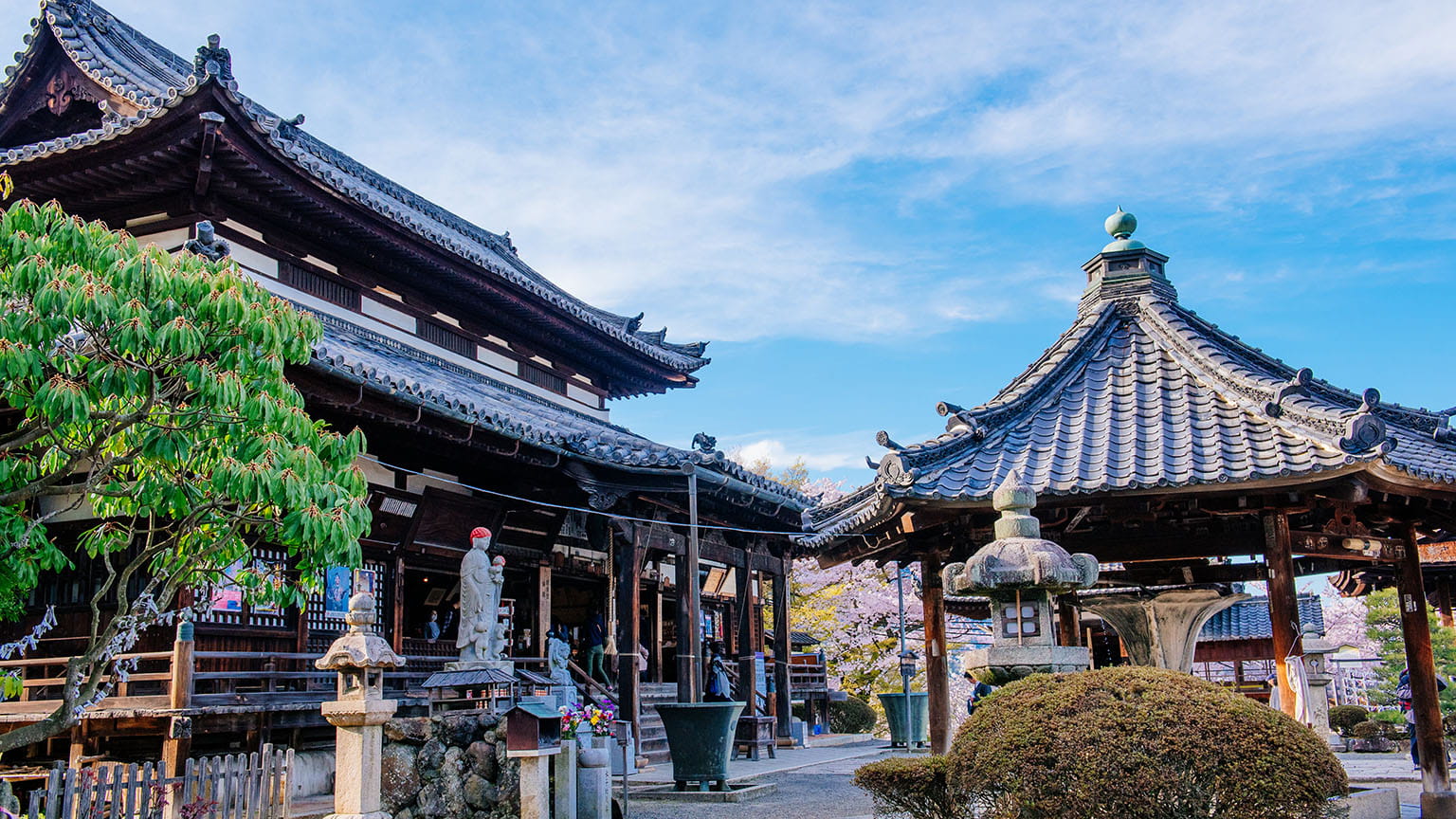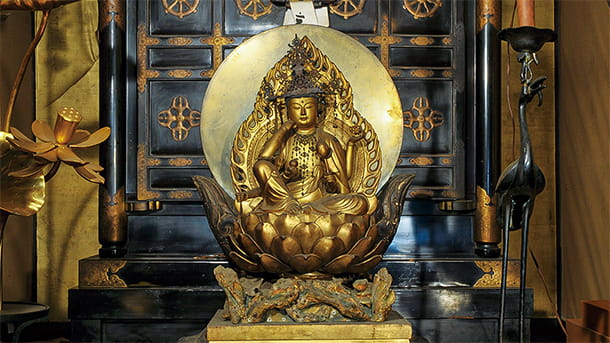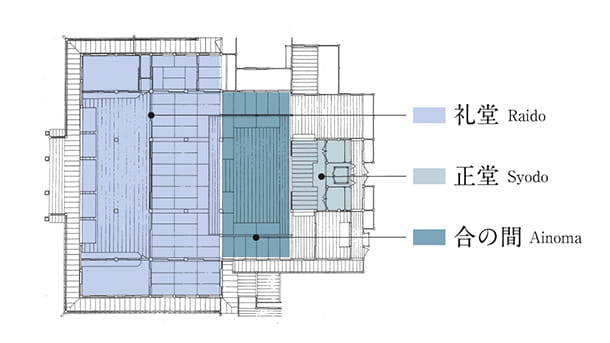Cultural Property of Shiga Prefecture
Kannondo Hall
READER
This is the fourteenth stop on the Saigoku Kannon Pilgrimage, a route that connects thirty-three temples dedicated to Kannon in Western Japan. The hall sits in a scenic location overlooking Lake Biwa and the city of Otsu, a beautiful setting that has been cherished by writers and artists for centuries.
The Kannondo Hall is a central building in the southern section of the temple grounds. It was reportedly founded in 1072 as a place to pray for the recovery of Emperor Gosanjo, who was suffering from an illness at the time. The hall was later moved to its present location, but the original building burned down in 1686. The current hall was constructed in 1689 and contains as its principal image the statue of a seated Nyoirin Kannon, a work of art that has been designated by the government as an Important Cultural Property. The statue is rarely seen by anyone but the monks at the temple, and is only open to the public once every 33 years.
The building is a massive structure consisting of the Main Hall and the Raido Hall. The Raido Hall is connected to the main building by a corridor, which is called an ai-no-ma in Japanese, and serves as an outer sanctum (gejin). Its interior displays the beautiful design of the Genroku period (1688-1704).
- −
- Edo Period
(2nd year of Genroku Era, 1689)
Please rate this cultural heritage introduction page.
-
-
Satisfaction
-
-
Understanding
-
-
Recommendation
-
-
Attractiveness
-


